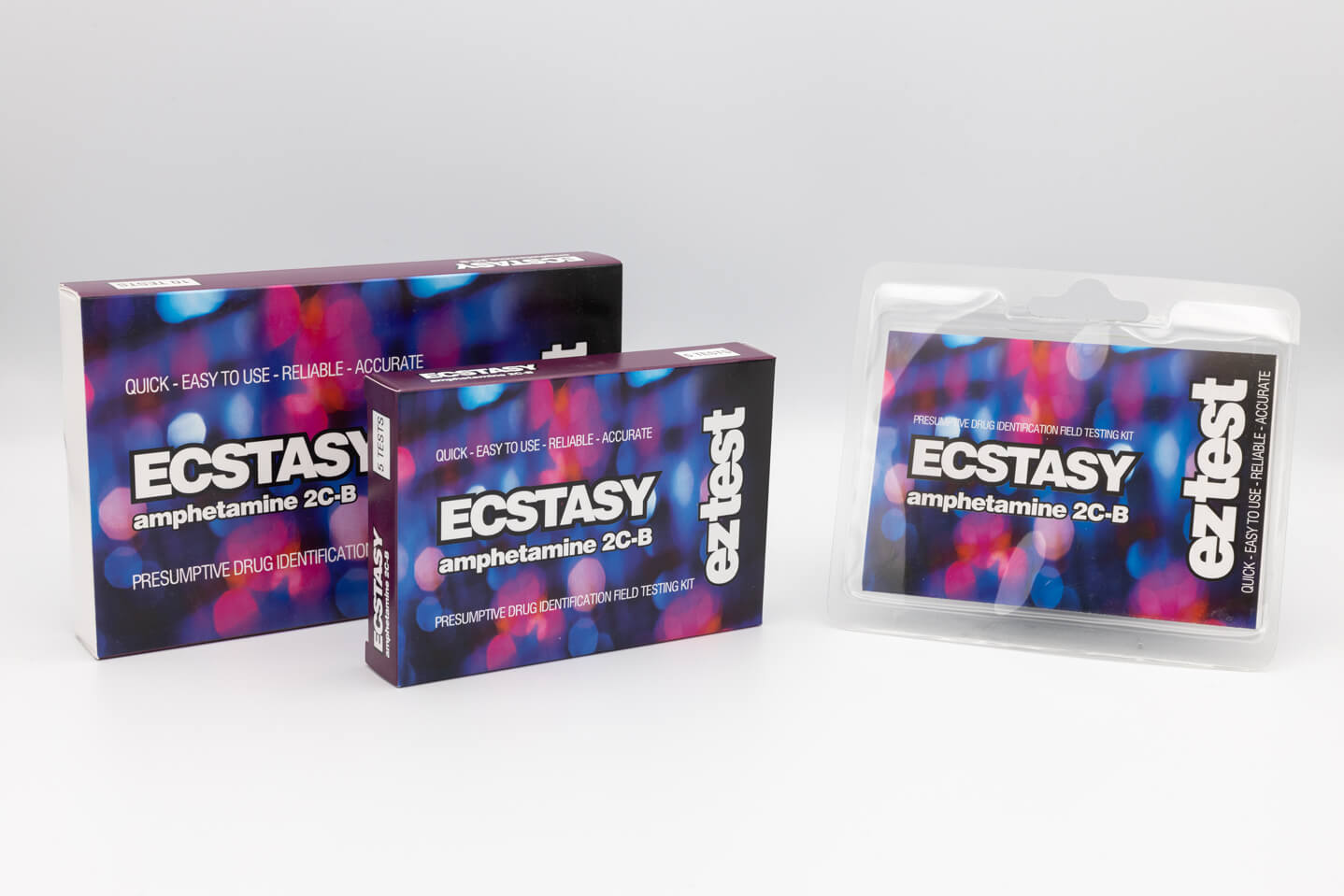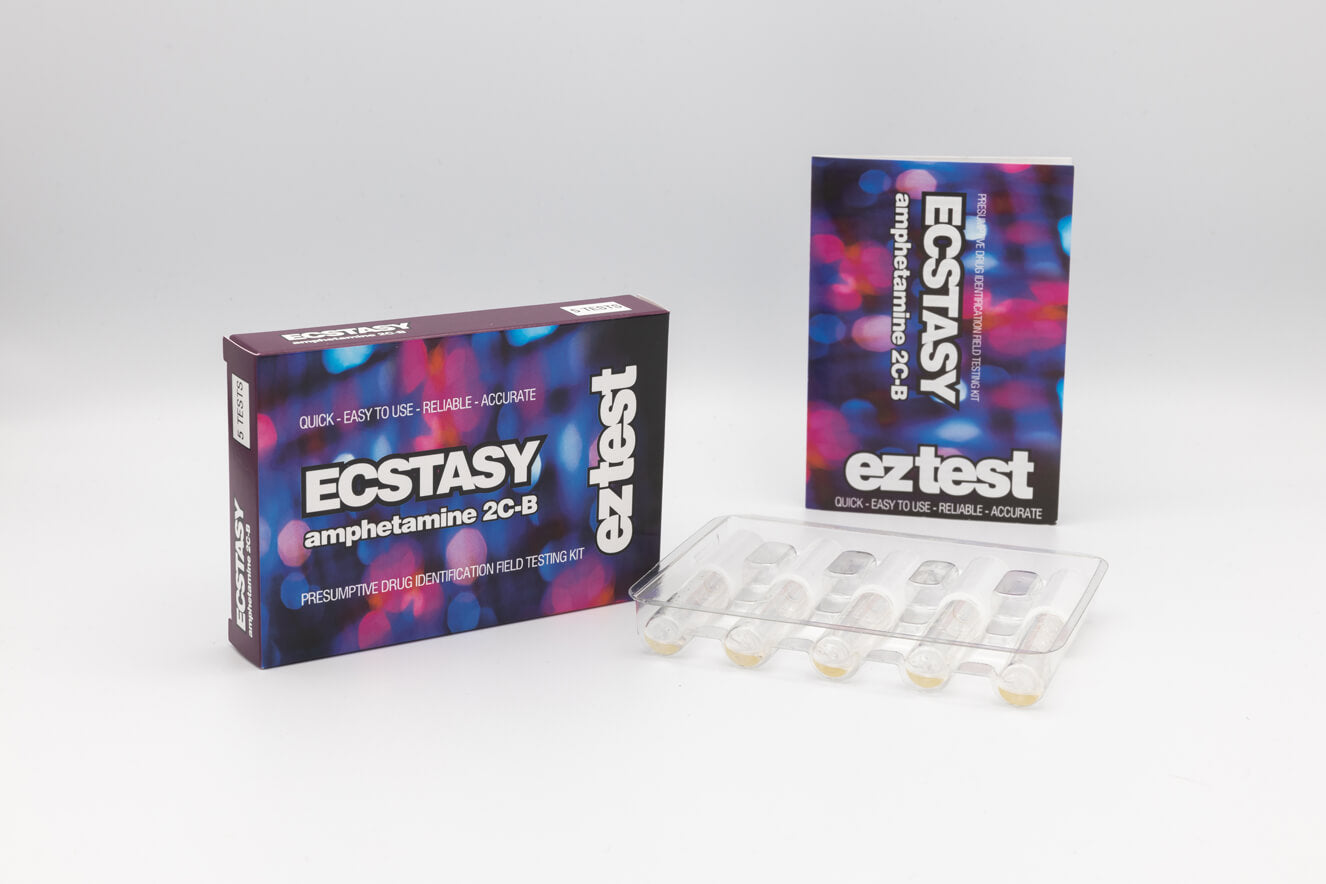EZ TEST
Ecstasy Drug Testing Kit
Ecstasy Drug Testing Kit
Couldn't load pickup availability
- Safe Shopping
- Discreet Shipping
- Secure Payments
 Detects MDMA and similar substances: Identifies various substances including MDMA, MDA, MDE, and MBDB.
Detects MDMA and similar substances: Identifies various substances including MDMA, MDA, MDE, and MBDB.
 Simple and Quick: Get results in a few minutes comparing reaction result against our results colour chart.
Simple and Quick: Get results in a few minutes comparing reaction result against our results colour chart.
 Testing at home: EZ Test Kits enable you to test substances in the comfort and safety of your own home.
Testing at home: EZ Test Kits enable you to test substances in the comfort and safety of your own home.
The Ecstasy Drug Testing Kit uses the Marquis reagent, the original test for MDMA detection, to indicate the presence of Ecstasy/MDMA and similar substances such as MDA, MDE, and MBDB. This test will also react to other substances like DXM, 2C-B, Amphetamine/Speed, and some opiates. The Marquis reagent test is the first step in the EZ Test range and provides a quick, easy way to gain an indication of what substance may be present in your sample.
What Does the Ecstasy Kit Detect?
What Does the Ecstasy Kit Detect?
The Marquis test will turn a different colour depending on the substance present in the sample. The kit includes an information sheet and a colour chart to help you compare the colour change to possible substances:
- Ecstasy (MDMA, MDA, MDE, MBDB) (Use our Robadope test to test to distinguish between MDMA and MDA)
- (Meth)Amphetamine
- 2C-B/C/I, DOB, DOI
- DXM
- Methylone, Butylone, Naphyrone
Simply refer to the included colour chart to interpret your results.
How it Works
How it Works
All EZ tests use a chemical reagent absorbed in silica gel, which is sealed inside a glass ampoule. When a small amount of a sample is added to the chemicals in the ampoule, if a reaction occurs, the solution will change colour. This colour should be compared to the chart inside the package to give an indication of what substances might be present in the sample.
The Marqius reagent was discovered by Edward Marquis in 1986. Marquis is among the most commonly used, and most versatile, reagent tests. The reagent is made from methenal/formaldehyde in water.
The exact nature of it’s reaction with MDMA (and other drugs) is not well understood, but appears to be through the formation of a stable carbocation or free-radical action.
Marquis is a broad-spectrum test, meaning that it will show a coloured product through reaction with many different drugs. Because of this, some colours can correspond to more
than one potential drug – in these cases it can be a good idea to use a second more targeted test in conjunction with Mecke.
For example:
MDMA and MDA: MDMA (3-methylendioxy methamphetamine) and MDA (3-methylenedioxy amphetamine) both produce a dark purple colour change. Robadope is recommended as a secondary test to distinguish between these two drugs.
Diphenhydramine, Eutylone and Pentylone: these three drugs all give a yellow coloured product with Marquis. These drugs can be distinguished with Liebermann (sold in our cocaine cuts drug testing kit).
Reagent Testing
Reagent Testing
What is Reagent Testing?
Reagents are chemicals (usually acids or bases) which react in a known way to the suspected contents of a sample. All reagents sold by EZ Tests are known to change colour according to the substance that they are testing for.
Reagent testing is the process of adding an unknown material to a chemical reagent to observe the reaction that follows. It is a form of forensic chemistry which aims to rule in and out certain chemicals or groups of chemicals with various reagents until the contents is known. Reagent testing does not guarantee the presence of any particular drug or the absence of any others.
Why is Reagent Testing Important?
Illicit drugs are made, sold and (often) consumed with no quality testing or indication of what they really contain. Unfortunately, this can result in bad experiences, anxiety and serious harm. Reagent tests offer a quick and easy way to get some idea of what you may be taking.
They are not perfect, and they do not replace professional laboratory testing services, but they can be vital and may save a life.
What are the Limitations of Reagent Testing?
Reagent testing cannot guarantee that a sample contains a certain drug, and it cannot guarantee that there is no other drug present. Despite testing, it is possible that a different chemical reacted similarly to the expected reaction, causing a false positive. It is also possible that there is a drug in your sample which does not react to the reagent in question, or the second reaction is obscured by the drug you expect to find, and therefore is not found in the tests. It is always a good idea to use three or more different tests on any sample, to reduce the risk of this happening.
If you are using a purity test then it is vital that you are testing a known quantity of the drug (and that this amount is the same as the amount specified in the instructions) or else the degree of colour change will not correspond to the purity of the sample.
Storage
Storage
The ampoule in which the reagents are supplied is made out of clear glass to allow reliable identification of colour changes. To ensure that the shelf life of your reagents is as long as possible, please store them in a cool, dark place such as your fridge or cool cupboard.
Safe Disposal
Safe Disposal
After testing, please ensure that the ampoule and any leftover sample are disposed of safely to prevent contamination or harm. Proper disposal helps protect yourself and others from potential exposure to harmful substances.
If the reagent comes into contact with your skin, you should wash the affected area with soap and lukewarm water for 10-15 minutes. If the reagent comes into contact with your eyes you should adhere to the same process with lukewarm water only.
Why Choose the Ecstasy EZ Test Kit?
Why Choose the Ecstasy EZ Test Kit?
This test is ideal for those seeking a quick, easy, and straightforward way to check for the presence of MDMA, or other related substances. Whether you are testing for personal safety or simply for knowledge, this kit provides a simple solution to obtain an indication of what's in a sample.
- Convenient: A single-use kit that's easy to use, even for first-time users.
- Fast Results: Results are available within minutes after mixing the sample.
- Handy Colour Chart: Clear and concise colour chart included for easy interpretation of results.
Share
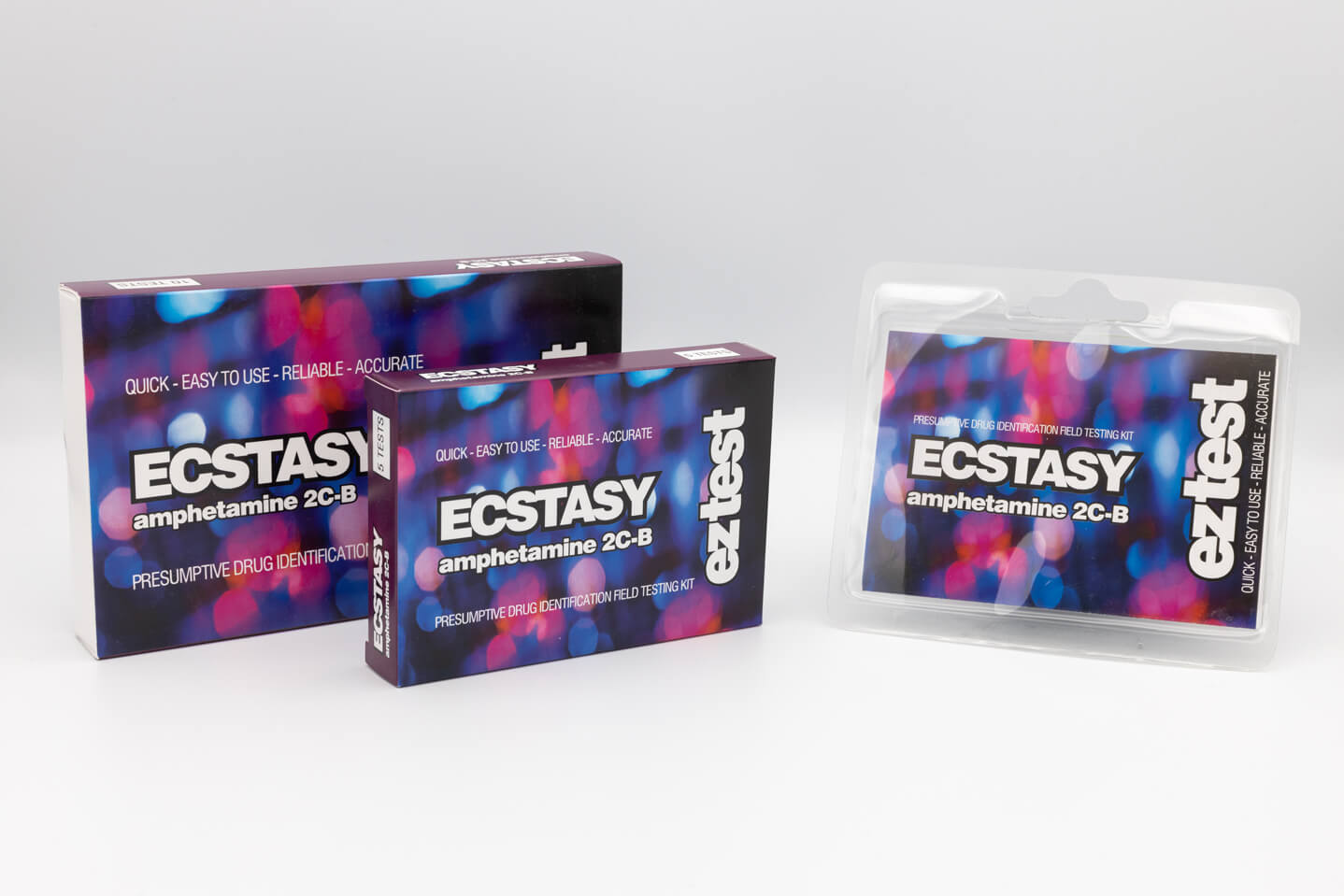
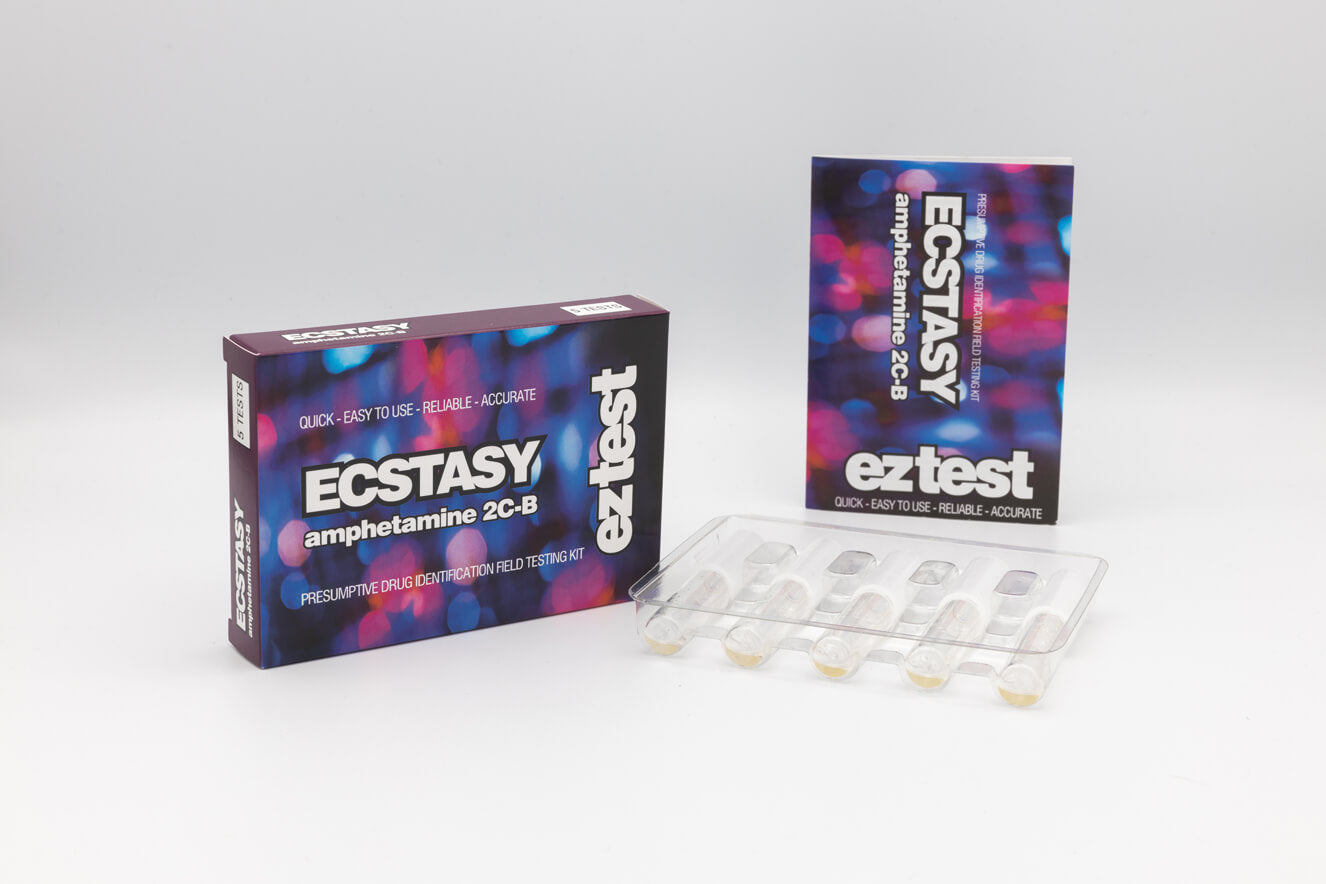
-
IMPORTANT WARNING!
- EZ Test Kits do not provide any information about how much of a substance has been detected, and accordingly do not indicate a safe amount of the drug to take.
- The positive result for presence of one drug does not mean the absence of other (potentially more dangerous) substances.
- There is potential for technical or procedural errors. Please follow the instructions carefully.
- Other factors and substances may cause false results (either false negative or false positive results for the drug you are expecting to find). These reagents are indicative only and do not provide definitive results.
- A negative result does not rule out the presence of any drug. It may be present in quantities lower than the limit of detection, leading to an apparent negative result.
- If you are unclear of your results and would like a full analysis of the substance you have please see our article on laboratory testing.
- A positive or negative test result is NOT an indication that the substance being examined is safe to use. No drug is completely safe even if it is pure. EZ Test does not condone the use of illicit drugs.
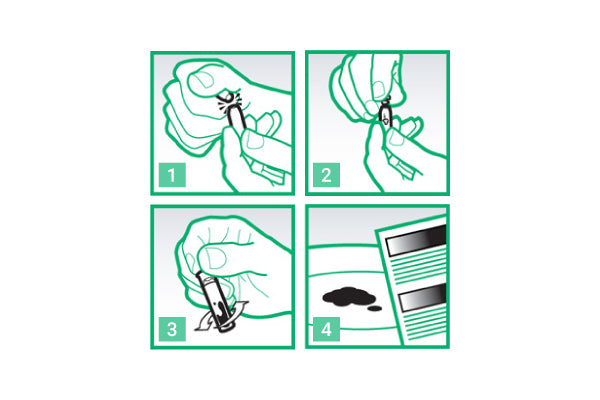
Instructions
1. Crack Open the Ampoule: Carefully break the ampoule to release the reagent.
2. Insert a Small Sample: Add a small amount of the substance you wish to test. For reagent testing we recommend using only a few milligrams of your sample – for example a few shavings from a pill or a few crumbs of powder. For samples absorbed onto blotter paper we recommend cutting off about an eighth of the tab to test. For liquid samples a drop or two will suffice.
3. Mix Thoroughly: Close the ampoule with the plastic lid and shake well to mix the sample with the reagent. Make sure that the lid is secure before shaking to prevent spillage of caustic reagents.
4. Observe the Reaction: Watch the colour change and compare it with the provided colour chart to identify the substance. Always perform reagent testing in bright white light and always examine the colour change against a white background.

Interpreting the results
- MDMA/MDA: If your sample contains MDMA or MDA then a distinctive deep purple colour will be produced when testing your substance.
- Synthetic Cathinones: Certain synthetic cathinones such as methylone, eutylone and butylone (sometimes sold in place of MDMA) produce a distinctive yellow product.
- Amphetamine: Amphetamine and methamphetamine will produce an orange/red coloured product.
- DXM: DXM (a cough suppressant with dissociative properties) will produce a gray/black coloured
product. - 2C-x: The 2C-x compounds (such as 2C-B, 2C-C and 2C-I) produce a yellow/green product.
- No Significant Colour Change: If the reaction produces no or little colour change, the sample likely does not contain detectable levels of the chemicals in question.
Useful Links
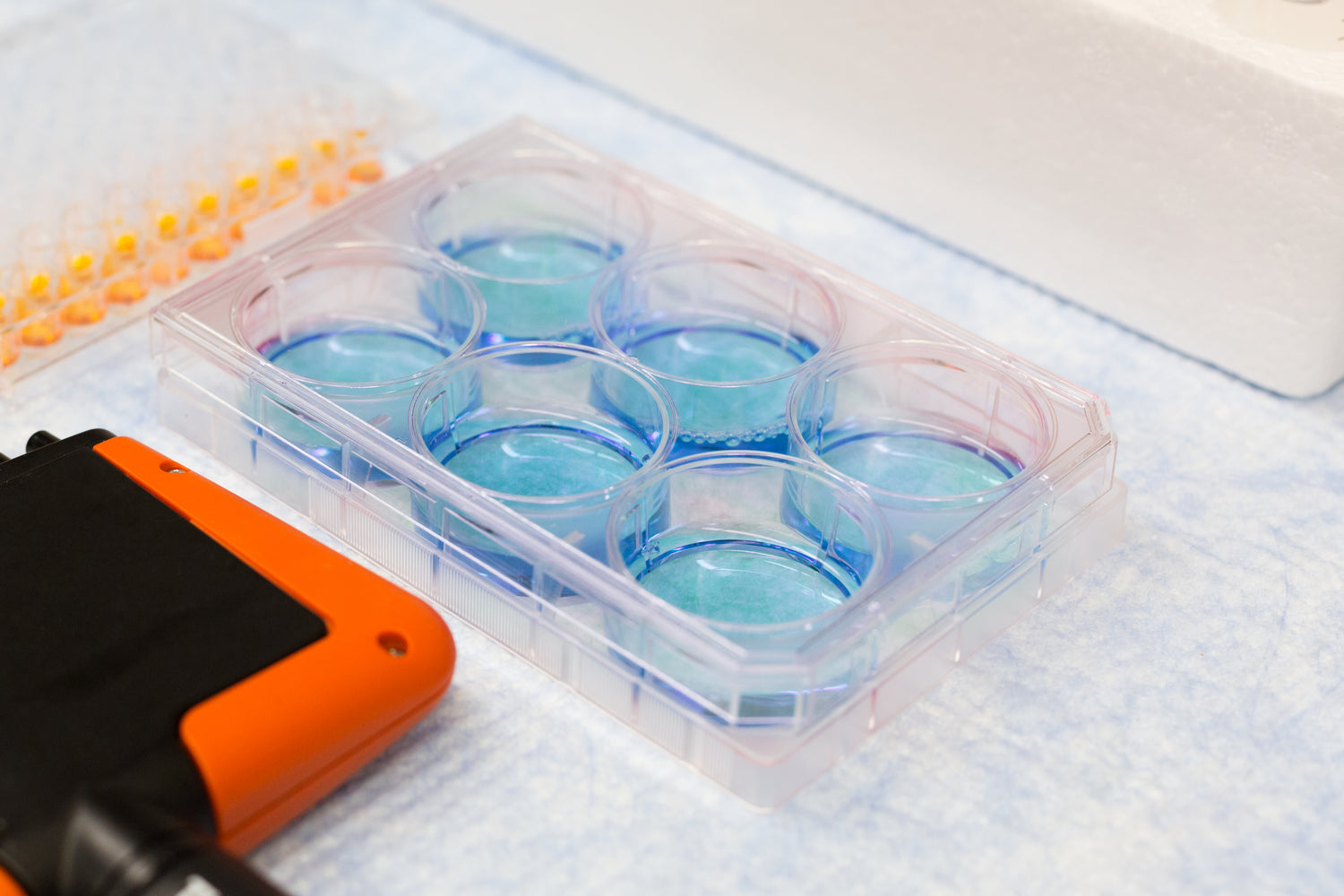
drug science reagent testing information
Any type of recreational drug use is likely to carry a degree of risk, both long-term and short-term. This is true for legal recreational...
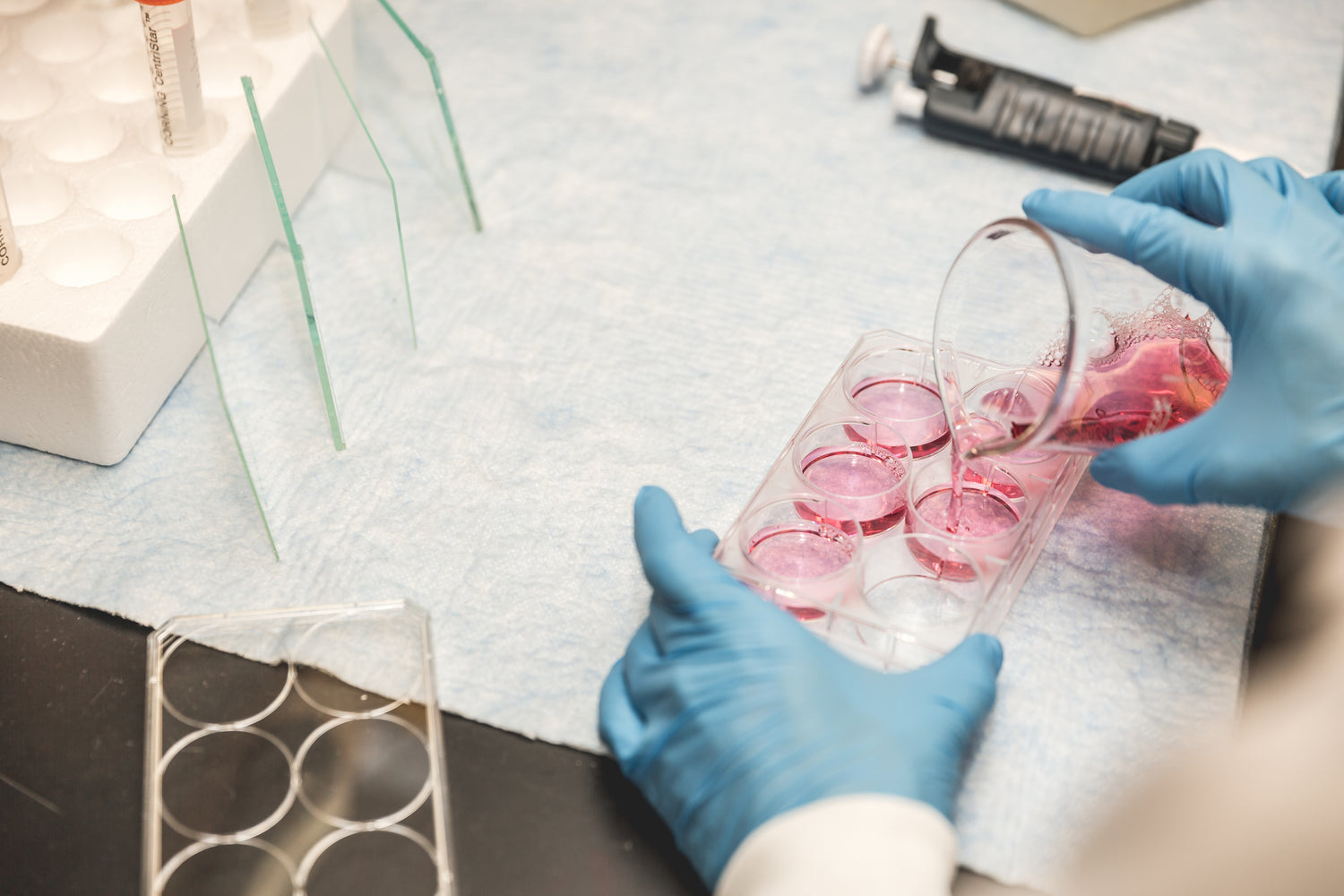
review of marquis for testing methcathinones
The preliminary identification of methcathinone and analogues of methcathinone presents a new and growing challenge to law enforcement. Colour tests remain...

